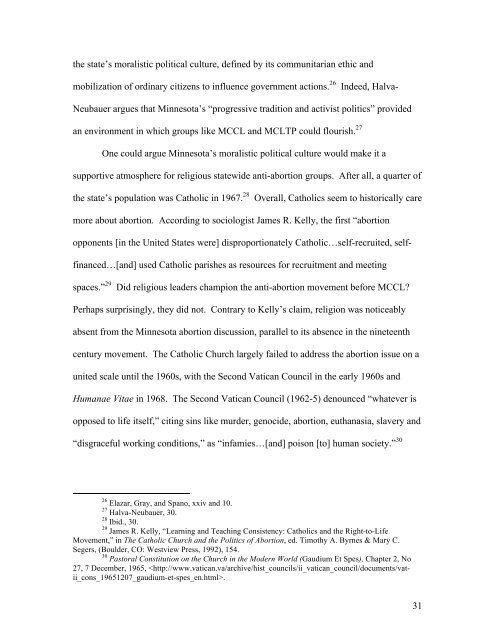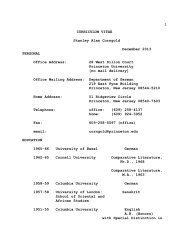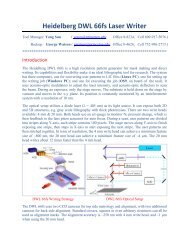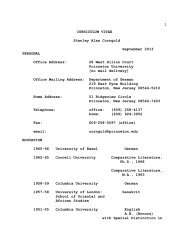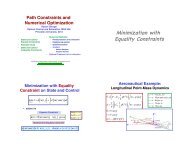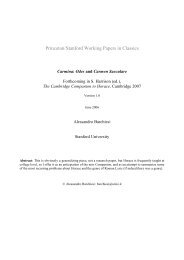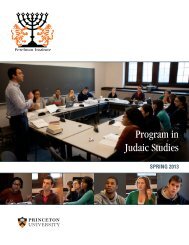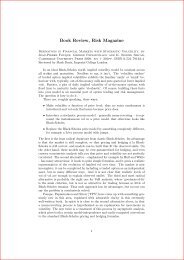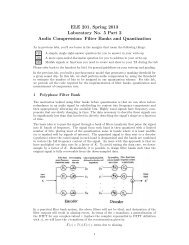The Pre-Roe Pro-Life Movement in Minnesota and New York
The Pre-Roe Pro-Life Movement in Minnesota and New York
The Pre-Roe Pro-Life Movement in Minnesota and New York
Create successful ePaper yourself
Turn your PDF publications into a flip-book with our unique Google optimized e-Paper software.
the state’s moralistic political culture, def<strong>in</strong>ed by its communitarian ethic <strong>and</strong><br />
mobilization of ord<strong>in</strong>ary citizens to <strong>in</strong>fluence government actions. 26 Indeed, Halva-<br />
Neubauer argues that M<strong>in</strong>nesota’s “progressive tradition <strong>and</strong> activist politics” provided<br />
an environment <strong>in</strong> which groups like MCCL <strong>and</strong> MCLTP could flourish. 27<br />
One could argue M<strong>in</strong>nesota’s moralistic political culture would make it a<br />
supportive atmosphere for religious statewide anti-abortion groups. After all, a quarter of<br />
the state’s population was Catholic <strong>in</strong> 1967. 28<br />
Overall, Catholics seem to historically care<br />
more about abortion. Accord<strong>in</strong>g to sociologist James R. Kelly, the first “abortion<br />
opponents [<strong>in</strong> the United States were] disproportionately Catholic…self-recruited, selff<strong>in</strong>anced…[<strong>and</strong>]<br />
used Catholic parishes as resources for recruitment <strong>and</strong> meet<strong>in</strong>g<br />
spaces.” 29<br />
Did religious leaders champion the anti-abortion movement before MCCL?<br />
Perhaps surpris<strong>in</strong>gly, they did not. Contrary to Kelly’s claim, religion was noticeably<br />
absent from the M<strong>in</strong>nesota abortion discussion, parallel to its absence <strong>in</strong> the n<strong>in</strong>eteenth<br />
century movement. <strong>The</strong> Catholic Church largely failed to address the abortion issue on a<br />
united scale until the 1960s, with the Second Vatican Council <strong>in</strong> the early 1960s <strong>and</strong><br />
Humanae Vitae <strong>in</strong> 1968. <strong>The</strong> Second Vatican Council (1962-5) denounced “whatever is<br />
opposed to life itself,” cit<strong>in</strong>g s<strong>in</strong>s like murder, genocide, abortion, euthanasia, slavery <strong>and</strong><br />
“disgraceful work<strong>in</strong>g conditions,” as “<strong>in</strong>famies…[<strong>and</strong>] poison [to] human society.” 30<br />
26 Elazar, Gray, <strong>and</strong> Spano, xxiv <strong>and</strong> 10.<br />
27 Halva-Neubauer, 30.<br />
28 Ibid., 30.<br />
29 James R. Kelly, “Learn<strong>in</strong>g <strong>and</strong> Teach<strong>in</strong>g Consistency: Catholics <strong>and</strong> the Right-to-<strong>Life</strong><br />
<strong>Movement</strong>,” <strong>in</strong> <strong>The</strong> Catholic Church <strong>and</strong> the Politics of Abortion, ed. Timothy A. Byrnes & Mary C.<br />
Segers, (Boulder, CO: Westview <strong>Pre</strong>ss, 1992), 154.<br />
30 Pastoral Constitution on the Church <strong>in</strong> the Modern World (Gaudium Et Spes), Chapter 2, No<br />
27, 7 December, 1965, .<br />
31


